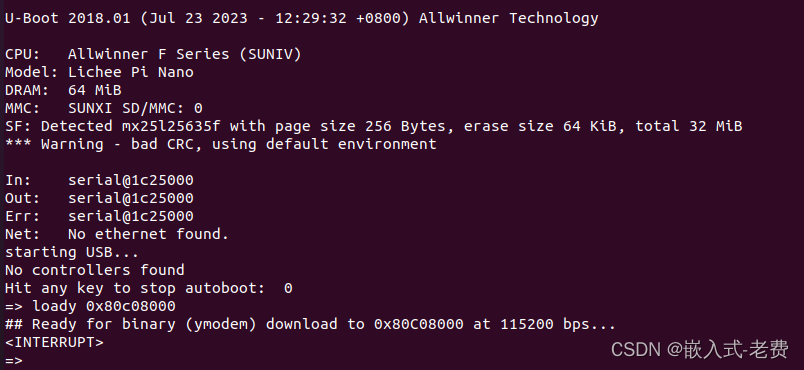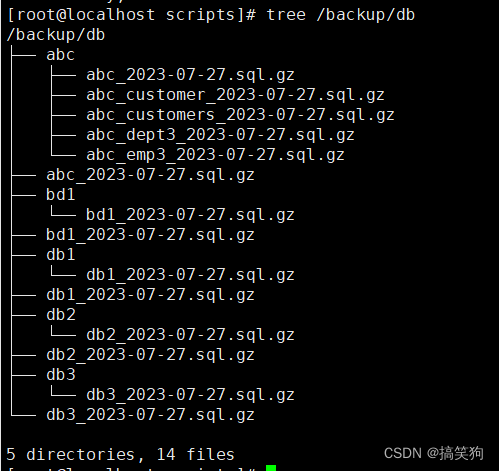sigmoid函数
def sigmoid(x):return 1.0 / (1+np.exp((-x)))
定义最小平方和损失函数
loss = torch.nn.MSELoss()
线性回归编程

如果不加噪音就成了正常的线性函数了,所以要加噪音。
torch.normal(0, 0.01, y.shape)
torch.normal(0, 0.01, y.shape)是一个用于生成服从正态分布的张量的函数。其中,0代表均值,0.01代表标准差,y.shape表示生成的张量的形状与y相同。具体而言,该函数会生成一个张量,其元素值是从均值为0、标准差为0.01的正态分布中随机采样得到的。
y.reshape((-1, 1))
y.reshape((-1, 1))是将张量y进行形状重塑的操作。通过该操作,可以将y转换为一个列向量,其中每个元素保持不变。
在PyTorch中,使用reshape函数对张量进行形状调整。参数(-1, 1)表示将y重塑为一个列向量,其中-1表示自动计算此维度的大小,而1表示列的维度大小为1。
y.reshape((-1, 1))将返回一个形状调整后的新张量,而原始的y张量保持不变。
手动实现线性回归
pip install d2l==0.17.6
import randomimport torch
from d2l import torch as d2ldef synthetic_data(w,b,num_examples):# 生成大小为(0,1),num_examples行,len(w)列的数据x , 此处是(1000,2)X = torch.normal(0,1,(num_examples,len(w)))# y = X*w + by = torch.matmul(X,w) + b# y 加上噪音y += torch.normal(0,0.01,y.shape)return X,y.reshape((-1,1))'''随机(小批量)梯度下降'''
def data_iter(batch_size,features,labels):num_examples = features.shape[0]'''生成0-999'''indices = list(range(num_examples))'''打乱0-999'''random.shuffle(indices)'''0-999中每次取一个batch_size'''for i in range(0,num_examples,batch_size):'''设置一个batch的索引'''batch_indices = torch.tensor(indices[i:min(i+batch_size,num_examples)])yield features[batch_indices],labels[batch_indices]def plot_img(features,labels):# 创建一个画板d2l.set_figsize()# 画一个散点图 (numpy格式的x,y,散点的像素大小)d2l.plt.scatter(features[:, 1].detach().numpy(), labels.detach().numpy(), 1)# 展示图像d2l.plt.show()true_w = torch.tensor([2,-3.4])
true_b = 4.2
features,labels = synthetic_data(true_w,true_b,1000)# 画图显示特征和标签
# plot_img(features,labels)batch_size = 10
for X,y in data_iter(batch_size,features,labels):print(X,'\n',y)break# 初始化模型参数, w是个列,形状为两行1列,值符合0,0.01的分布
w = torch.normal(0,0.01,size=(2,1),requires_grad=True)
b = torch.zeros(1,requires_grad=True)# 定义线性函数
def linreg(X,w,b):return torch.matmul(X,w)+b# 定义损失函数
def squared_loss(y_hat,y):return (y_hat - y.reshape(y_hat.shape)) ** 2 /2# 定义优化函数
def sgd(params,lr,batch_size):'''小批量随机梯度下降'''with torch.no_grad():for param in params:'''参数 = 参数 - 1/batch_size * -学习率 * 梯度'''param -= lr * param.grad / batch_size'''一个参数一个梯度,该下一个参数了比如是w2,所以要梯度清零'''param.grad.zero_()# 开始训练,定义参数和网络
lr = 0.03
num_epochs = 10
net = linreg
loss = squared_lossfor epoch in range(num_epochs):for X,y in data_iter(batch_size,features,labels):y_hat = net(X,w,b)L = loss(y_hat,y)# 计算的是每个样本的损失,所以要求和L.sum().backward()# 更新参数sgd([w,b],lr,batch_size)with torch.no_grad():# w,b已经经过上面的更新函数更新过了,用更新后的w,b代入公式 计算损失train_L = loss(net(features,w,b),labels)print(f'epoch {epoch+1}, loss {float(train_L.mean()):f}')





